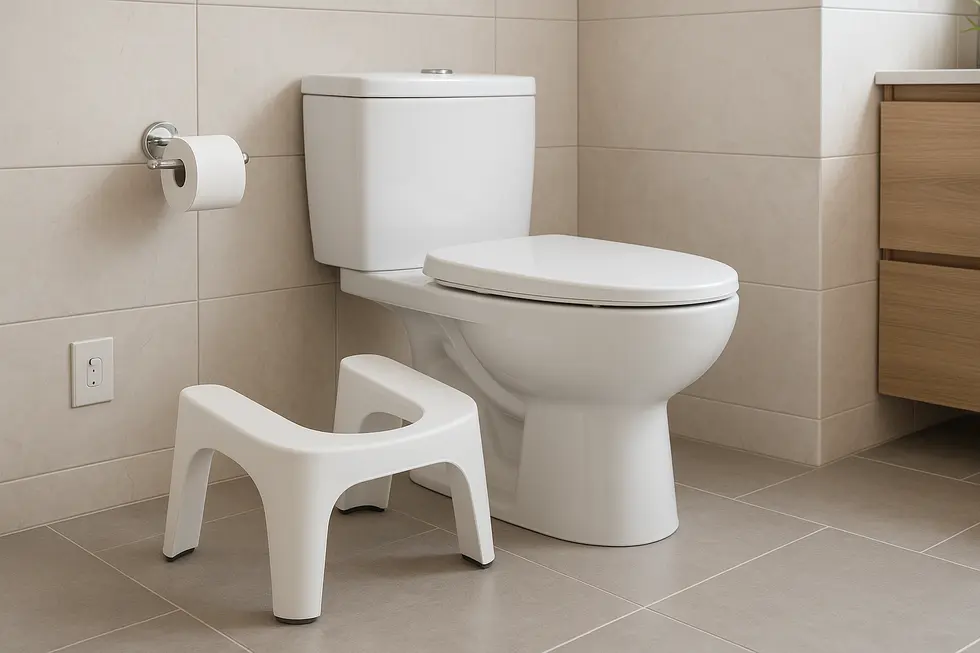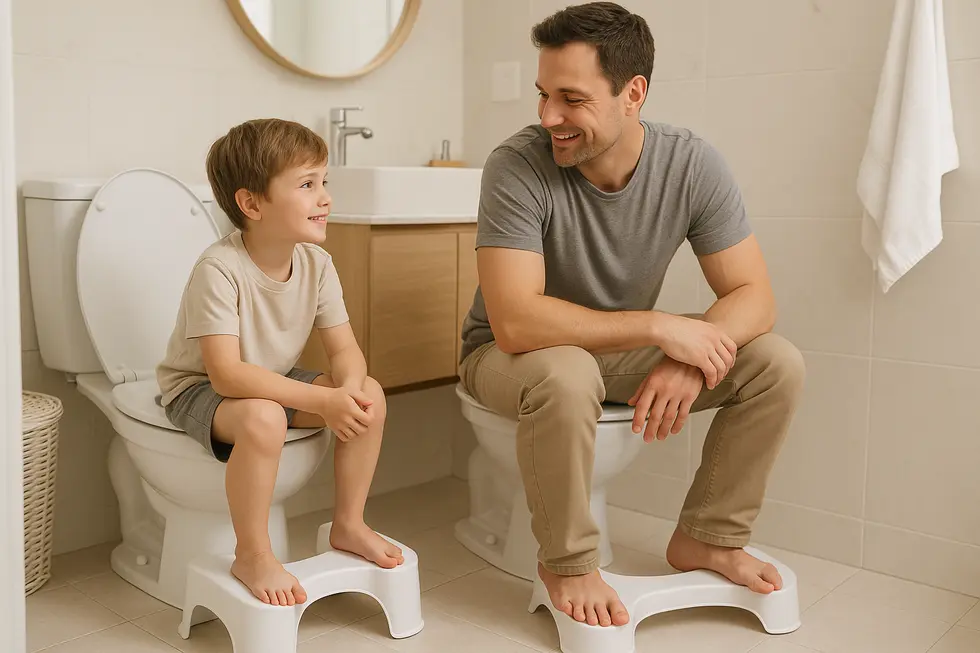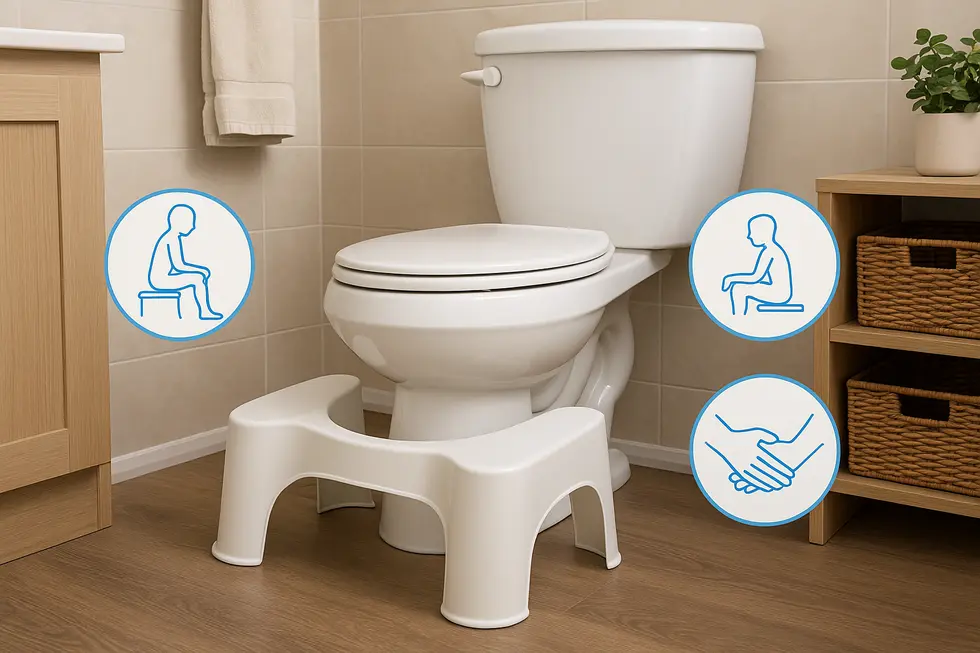Toilet Stools
The Essential Guide to Choosing the Right Toilet Stool for Your Family
Purchasing the right toilet stool can make a significant difference in promoting healthy bathroom habits for your family. This toilet stool buying guide explores the technological advancements, economic considerations, and societal health impacts of toilet stools, providing a comprehensive understanding to help you make an informed decision. Discover how ergonomic designs elevate bathroom experiences, assess the cost-benefit ratio, and understand the societal push towards healthier lifestyles. Whether you’re new to this concept or upgrading, this toilet stool buying guide ensures you choose wisely for long-term comfort and well-being.
Smart Features and Future-Proof Materials: The Tech Behind Choosing the Right Toilet Stool

Technology now reaches beneath our feet. While the purpose of a toilet stool is still to angle the hips into a healthy squat, recent innovations have transformed the buying checklist from a simple height measurement into a mini crash course on smart-home engineering.
Modern stools start with materials. Injection-molded polymers reinforced by carbon or bamboo fibers weigh less than classic wood yet support heavier loads without flexing. Some brands sandwich high-density foam between these shells, creating a silent, cushioned platform that dampens bathroom echoes for nighttime visits. If you share a tiled floor with light sleepers, that acoustic engineering matters as much as comfort.
Next comes height adjustability. Instead of fixed risers, telescoping legs or magnetic riser blocks let you swap between 6-, 7-, and 9-inch positions in seconds, adapting to both standard and comfort-height toilets. This modular hardware may look simple, but the friction-lock mechanisms are often borrowed from camera tripods and tested for thousands of cycles. For a deeper dive into these adjustable toilet stool innovations, see how manufacturers balance cost, strength, and recyclability.
Sensor tech is the newest frontier. Motion-activated LED strips hidden under the platform illuminate the floor when you approach, guiding sleepy users without waking them with overhead lights. Higher-end models add load sensors that record how long you squat—useful data if you are tracking IBS flare-ups in a health app. Most connect via low-energy Bluetooth, so battery life stretches to months between USB-C charges.
Compatibility with other smart fixtures is equally important. A stool that slides under the bowl must clear the power cord of a smart bidet seat and not block an automatic flush sensor. Smooth, bevel-free edges prevent water from bidet spray pooling on the platform, reducing wipe-downs. If your bathroom already features a heated seat or self-cleaning bowl, choose a stool with a waterproof IPX5 rating so stray mist or cleaning cycles do not corrode embedded circuits.
Finally, consider maintenance tech. Removable, antimicrobial silicone sleeves can be popped off and dish-washed, replacing the tedious scrubbing of textured plastic. Some stools even coat high-touch zones with photocatalytic compounds that break down bacteria under normal bathroom lighting, keeping your routine low effort and low chemical.
By evaluating these technological layers—materials, adjustability, sensors, smart-home harmony, and self-sanitizing surfaces—you secure a stool that enhances posture today and remains relevant as the rest of your bathroom grows smarter (see the feature comparison in Good Housekeeping’s guide to smart toilets and bidet seats).
Counting the Cost: How Smart Spending on a Toilet Stool Pays Dividends

Price tags on toilet stools vary wildly, but looking only at the sticker cost hides the bigger financial picture. A flimsy stool made of thin plastic may seem like a bargain, yet cracks or warping often appear within a year. Replacing a $20 model twice quickly exceeds the one-time outlay for a sturdier $40–$60 option built with high-density plastic or a reinforced bamboo frame. Longevity, therefore, is the first pillar of economic value.
The second pillar is health economics. Clinical studies link the squat-like posture to reduced straining, fewer hemorrhoid flare-ups, and lower incidence of constipation. Each avoided over-the-counter laxative course, hemorrhoid cream, or copay for a gastroenterologist quietly repays a portion of the stool’s cost. For families managing chronic IBS, the savings multiply; fewer medical appointments translate into preserved sick days and higher productivity.
Adjustability adds another layer of return on investment. A model offering two height settings can serve growing children, adults of different leg lengths, and even pregnant users whose center of gravity shifts. Instead of purchasing several fixed-height products, one versatile stool meets every life stage. An insightful breakdown of this multi-user value appears in the guide on whether or not toilet stools are worth it.
Maintenance costs are minimal when the stool includes a removable, waterproof cover. A quick wipe prevents moisture damage that would otherwise shorten the stool’s service life. Non-slip pads also safeguard bathroom tiles from scratches, eliminating potential repair expenses.
Finally, consider opportunity cost: a stool that tucks beneath the bowl after use frees floor space. In compact apartments that square footage is precious; avoiding bulky bathroom furniture can delay or even eliminate the need for costly storage renovations.
Viewed through this broader lens—durability, health savings, household versatility, and space efficiency—the mid-range ergonomic stool is often the frugal choice. By spending a bit more upfront, buyers secure years of reliable service and quietly trim medical and household budgets, proving that smart bathroom investments begin at your feet.
Beyond the Bathroom: How a Simple Toilet Stool Shapes Health, Habits, and Home Design

A toilet stool may look like an unassuming bathroom accessory, yet its ripple effects reach far beyond personal comfort. By lifting the feet and tilting the pelvis, the stool restores the squatting angle our ancestors used for millennia. This subtle posture change straightens the recto-anal canal, allowing gravity—not straining—to finish the job. Fewer pushes mean less intra-abdominal pressure, which medical studies associate with lower incidences of hemorrhoids, pelvic floor weakening, and even varicose veins. For households where irritable bowel syndrome or chronic constipation is common, the promise of faster, more complete evacuation can feel life-changing.
The implications are societal as well as medical. Many users report shortening their bathroom visits by several minutes. Multiply that across an office or a family and you reduce queues, water usage, and even electricity in public restrooms with motion-sensing lights or fans. Eco-minded buyers appreciate that improved elimination typically cuts toilet paper needs—an invisible saving that echoes the environmental argument often heard in the bidet community. (For a deeper dive into cost–benefit thinking, see this discussion on whether toilet stools are worth it.)
Cultural norms are slowly catching up. Once viewed as a novelty from viral videos, ergonomic footrests are now recommended by gastroenterologists and pelvic floor therapists. Their presence in Airbnb listings and coworking spaces signals a broader shift toward inclusive design: a single height-adjustable base can serve children, pregnant users, and elders alike. In multigenerational homes, slipping a non-slip, wipe-clean model under the bowl fosters independence for seniors who fear the strain of traditional seating. A well-researched toilet stool buying guide can help families identify the right model to meet these diverse needs.
Even interior aesthetics are evolving. Designers now factor the stool’s stow-away footprint and material palette into overall bathroom plans, choosing bamboo or transparent acrylic to complement spa-style décor. Retail data shows that households often pair stools with bidet attachments, creating a holistic hygiene station where posture and cleansing work together for health. What began as a niche wellness gadget is quietly rewriting daily ritual, proving that small ergonomic changes can drive wide-reaching gains in comfort, sustainability, and dignity. With the right toilet stool buying guide, consumers are empowered to choose products that align with both health goals and home design.
Final thoughts
Choosing the right toilet stool involves understanding its technological benefits, considering economic implications, and recognizing its role in promoting family health. By focusing on ergonomic design, cost-effectiveness, and societal benefits, you can ensure a healthier and more comfortable bathroom experience for all family members.
Experience a new standard of clean with PEGABidet—designed for comfort, safety, and independence. Join thousands who trust us to make personal care simple and dignified. Contact us at contact@pegabidet.com
About us
PEGABidet is a brand owned by L.A NEXTGEN LLC, based in California. We design intuitive, hygienic, and accessible bathroom solutions that prioritize safety, dignity, and independence. Our mission is to make personal care effortless and empowering for people at every stage of life.

